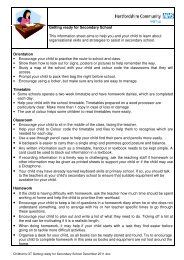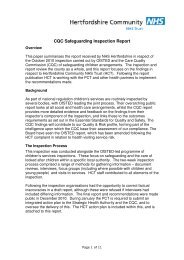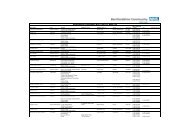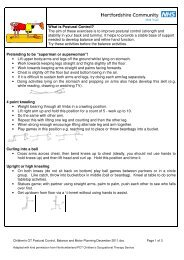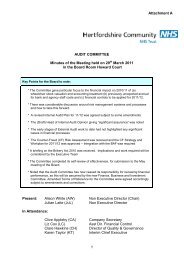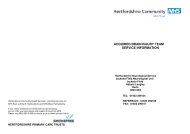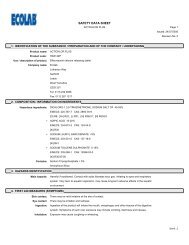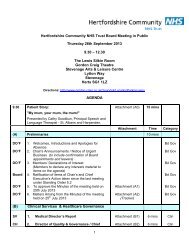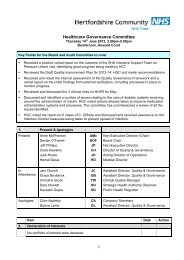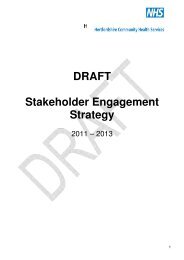Chlor-Clean
Chlor-Clean
Chlor-Clean
You also want an ePaper? Increase the reach of your titles
YUMPU automatically turns print PDFs into web optimized ePapers that Google loves.
Guest Medical<br />
Edenbridge Kent England TN8 6EW<br />
Material Safety Data Sheet<br />
According to Regulation (EC) No: 1907/2006<br />
6.5g <strong>Chlor</strong>-<strong>Clean</strong> Detergent Sanitiser Tablets<br />
Revision Date: November 2007<br />
1. IDENTIFICATION OF PRODUCT AND COMPANY<br />
Product Identification: <strong>Chlor</strong>ine Detergent Sanitiser Tablet<br />
Product Code: H8950/N<br />
Intended Use: Combined cleaning and disinfection of inanimate surfaces.<br />
Name & address of Company:<br />
Guest Medical Limited<br />
Enterprise Way<br />
Edenbridge<br />
Kent TN8 6EW<br />
United Kingdom<br />
Tel: +44(0)1732 867466 Fax: +44(0)1732 867476<br />
SDS Contact Email: enquiries@guest-medical.co.uk<br />
Emergency Telephone: +44(0)1732 867466 - Available only during office hours<br />
2. COMPOSITION/INFORMATION ON INGREDIENTS<br />
Substances presenting a health hazard within the meaning of EEC Directive 91/155.<br />
Product name CAS No EINECS Conc Range R phrases Symbol WEL<br />
Troclosene Sodium 2893-78-9 220-767-7 20-30% w/w 8, 22, 31, O, Xn, N WEL<br />
(NaDCC)<br />
36/37, 50/53<br />
Adipic Acid 124-04-9 204-673-3 10-25% w/w 36 Xi -<br />
Amorphous silica 7631-86-9 231-86-9 0.5% WEL<br />
3. HAZARDS IDENTIFICATION<br />
HARMFUL if swallowed. Irritating to eyes and respiratory system. Contact with acid liberates toxic gas.<br />
On contact with moisture, NaDCC readily decomposes to <strong>Chlor</strong>ine, Hypochlorous Acid & Cyanuric Acid.<br />
4. FIRST AID MEASURES<br />
Eye Contact:<br />
Skin Contact:<br />
Ingestion:<br />
Inhalation:<br />
Immediately flush with plenty of clean water for at least 15 minutes. If irritation persists,<br />
seek medical attention.<br />
Promptly wash thoroughly with water for at least 15 minutes while removing contaminated<br />
clothing. Wash any contaminated clothing well, before re-use.<br />
Immediately rinse mouth, then drink plenty of water or milk. Do not induce vomiting. Seek<br />
medical attention.<br />
Move to fresh air. If irritation persists, seek medical attention.<br />
5. FIRE-FIGHTING MEASURES<br />
Special Fire or Explosion Hazards<br />
Product is not flammable itself, but contact with combustible material may cause fire. Product combustible if dehydrated by drying.<br />
Decomposes above 250 O C with release of chlorine & other toxic fumes.<br />
A thermal decomposition can be extinguished by flooding with copious amounts of water or by isolating the decomposing material<br />
in open air and allowing it to be consumed. Use self-contained breathing apparatus and goggles. Do not approach from leeward.<br />
Suitable Extinguishing Media: Pressurised water or dry powder. Do not use dry fire extinguishers containing ammonium<br />
compounds.<br />
Other Recommendations: Remove the product if it is safe to do so, before using water for fire fighting, in order to minimise<br />
hazards from release of toxic fumes. It will often be safer to let the fire burn itself out. Where it is decided to fight the fire with<br />
water, large quantities must be used. If insufficient water is used there may be an explosion hazard associated with hot damp<br />
material. NaDCC may generate nitrogen trichloride when it is left under damp conditions.
6. ACCIDENTAL RELEASE MEASURES.<br />
Refer to section 8 for personal protection when handling spillage of the product. Any spillage should be cleaned up as soon as<br />
possible to prevent contamination with foreign materials with which it may react. Do not release into the environment. <strong>Clean</strong> up<br />
spillage with a dry, plastic scoop. Any spillage should not be returned into the original container but place in a dry, clean,<br />
plastic or glass container. Do not add water to spilled material. Spillages to be removed as chemical waste in accordance with<br />
local, regional or national provisions in force (Hazardous Waste Directive 91/689/EEC). (Incineration by Certified<br />
Management Waste Company in England and Wales.) Do not release unneutralised NaDCC to sewers, water sheds and water<br />
systems.<br />
7. HANDLING AND STORAGE.<br />
Recommended Storage Conditions<br />
Store away from all incompatibles and combustibles (see section 10). Store in a cool, dry, well-ventilated place.<br />
Moisture sensitive. Avoid high humidity levels. Do not allow water to get into container. Keep away from fire, heat, flame & direct<br />
sunlight. Keep container tightly closed. Keep out of reach of children. Never store damp or contaminated material.<br />
Recommended Handling Precautions<br />
Avoid contact with eyes, skin & clothing.<br />
When handling large quantities of tablets, wear chemical resistant gloves and safety goggles.<br />
Avoid breathing any dust.<br />
Wash thoroughly after handling.<br />
Use protective equipment recommended in section 8.<br />
Do not eat, drink or smoke when handling this material.<br />
8. EXPOSURE CONTROLS/PERSONAL PROTECTION<br />
Workplace Exposure Limits<br />
(EH40/2005): Long Term Exposure Limit to <strong>Chlor</strong>ine – (8 hours TWA) 0.5ppm 1.5mgm -3<br />
Short Term Exposure Limit to <strong>Chlor</strong>ine – (15 minutes) 1ppm 2.9mgm -3<br />
Long term exposure Limit to amorphous silica – (8 hours TWA) - 6mgm -3<br />
Respiratory Protection:<br />
Where any dust in the breathing zone cannot be controlled with ventilation, wear an<br />
officially approved respirator (NIOSH/MSHA or equivalent agency) for protection<br />
against airborne dust.<br />
Ventilation:<br />
Use local exhaust ventilation where appropriate<br />
Eye Protection:<br />
If airborne dust concentrations are high, wear appropriate protective goggles. Wash eyes<br />
with clean water where there is potential eye contact.<br />
Skin Protection:<br />
When handling large bulk quantities wear protective gloves.<br />
Wash immediately if skin is contaminated. Remove and wash contaminated clothing and<br />
clean up equipment before re-use.<br />
Wash thoroughly with soap and water after handling<br />
9. PHYSICAL AND CHEMICAL PROPERTIES<br />
Appearance: White flat bevelled tablet Vapour pressure: N/A<br />
Odour: Characteristic <strong>Chlor</strong>ine Odour Relative density: N/A<br />
pH: As is - not applicable Partition coefficient: n-octanol/water: N/A<br />
pH: In solution - 5.0 - 6.0 approx. Viscosity: N/A<br />
Solubility: Freely soluble Vapour density: N/A<br />
Oxidising Properties: Non-Oxidising Evaporation rate: N/A<br />
Flash point:<br />
Not flashing<br />
Flammability:<br />
Not flammable<br />
Autoflammability: Not autoflammable<br />
Explosion Properties: Not explosive<br />
10. STABILITY AND REACTIVITY<br />
Conditions to Avoid<br />
Do not store on or near heat sources or naked flame. Avoid moisture.<br />
NaDCC decomposes at temperatures above 240 O C liberating toxic gases.<br />
Materials to Avoid<br />
Contact with water liberates chlorine and with nitrogen compounds may cause explosion. Avoid organic materials, oils, grease,<br />
sawdust, reducing agents, nitrogen containing compounds, calcium hypochlorite, other oxidizers, acids, alkalis, cationic and<br />
certain non-ionic surfactants.
11. TOXICOLOGICAL INFORMATION<br />
Route of entry: Inhalation, skin contact & ingestion.<br />
Inhalation of NaDCC is irritating to the nose, mouth, throat and lungs.<br />
Ingestion of NaDCC can cause irritation and or/burns to the gastrointestinal tract.<br />
Skin & Eye Contact: with NaDCC can cause severe irritation and/or burns, characterized by redness, swelling and scab<br />
formation. May cause impairment of vision and corneal damage.<br />
Toxicological Data: NaDCC<br />
Acute toxicity<br />
Oral LD50 (rat) ca. 1825mg/kg<br />
Eye Irritation (rabbit) Severe irritant<br />
Rabbit dermal LD50 >20,000mg/kg<br />
Carcinogenicity<br />
This chemical is not considered to be carcinogenic by any reference source.<br />
12. ECOLOGICAL INFORMATION<br />
NaDCC is highly toxic to fish. Do not discharge into lakes, ponds, streams or public water unless in accordance with the permit of<br />
official regulations.<br />
13. DISPOSAL CONSIDERATIONS<br />
Disposal should be done in accordance with local, regional or national provisions in force (Hazardous Waste Directive<br />
91/689/EEC). (Incineration by Certified Management Waste Company in England and Wales.<br />
14. TRANSPORT INFORMATION<br />
Keep container strictly dry<br />
Keep away from FIRE, HEAT, FLAME & DIRECT SUNLIGHT. Keep out of reach of children<br />
UN Number: 3077<br />
Packing Group: III<br />
IMDG Code: Class 9<br />
ADR/RID: Class 9 (M7) miscellaneous dangerous substances and articles<br />
ICAO/IATA: No danderous goods according to IATA- DGR<br />
Proper shipping name: Sodium dichloroisocyanurate, anhydrous<br />
Designation of goods: Environmentally Hazardous Substance, Solid, N.O.S.<br />
15. REGULATORY INFORMATION<br />
Label for supply: HARMFUL<br />
Risk Phrases:<br />
R22 Harmful if swallowed<br />
Safety Phrases:<br />
S8<br />
S26<br />
S41<br />
Regulatory References:<br />
DANGEROUS FOR THE<br />
ENVIRONMENT<br />
R31 Contact with acids liberates toxic gas<br />
HARMFUL<br />
R36/37 Irritating to eyes and respiratory system<br />
R 50/53 Very toxic to aquatic organisms, may cause long term adverse effects in the aquatic environment.<br />
Keep container dry<br />
In case of contact with eyes, rinse immediately with plenty of water and seek medical advice<br />
In case of fire and/or explosion do not breathe fumes<br />
The Chemicals (Hazard Information & Packaging & Supply) (Amendment) Regulations 2005. (Chip3.1)<br />
16. OTHER INFORMATION<br />
Full test Risk phrases (section 1): 51/53 Very toxic to aquatic organisms, may cause long term adverse effects in the aquatic environment.<br />
Change from previous revision: sections 2, 5 and 8 updated.<br />
The information herein is based on data considered to be accurate as of the date of preparation of this Data Sheet. However, no warranty or<br />
representation, expressed or implied, is made as to the accuracy or completeness of the foregoing data and safety information. The user assumes<br />
all liability for any damage or injury resulting from abnormal use, from any failure to adhere to recommended practices or from any hazards<br />
inherent in the nature of the product.<br />
Changes from Previous Issue: Section 1, 3, 6, 9 & 13 updated.<br />
Tech\msds.<strong>Chlor</strong>-<strong>Clean</strong>H8950N Latest Revision: November 2007



